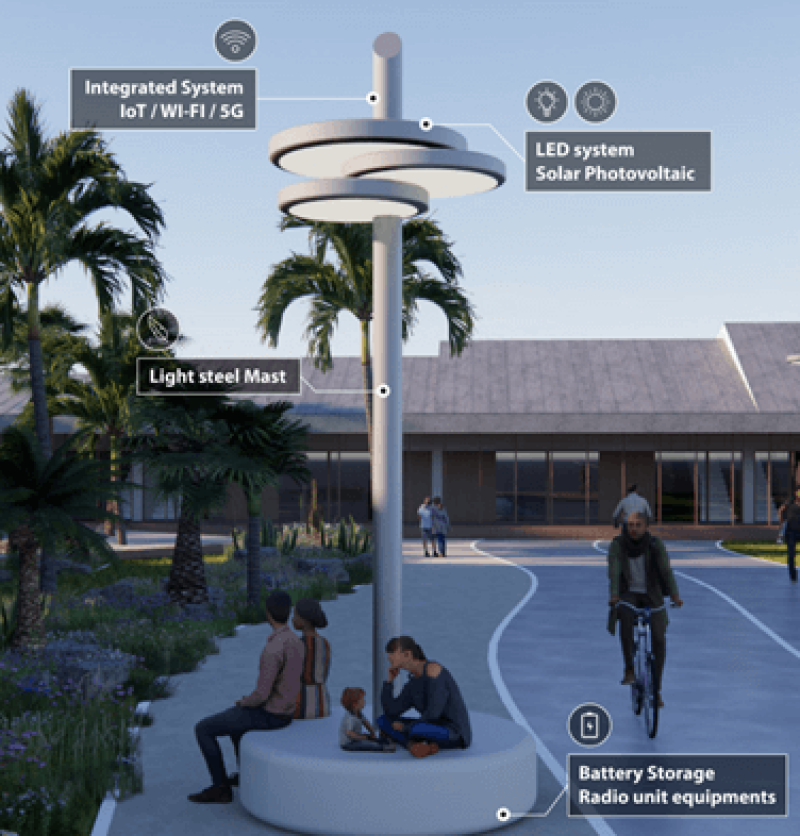TowerXchange: Please introduce your company - where do you fit in the telecoms infrastructure ecosystem and where do you operate?
Tiago Cunha, CEO, BSS Engineering: BSS Engineering is a global engineering, management and development consultancy operating in 4 locations worldwide focused on guiding our clients through many of the planet’s most intricate challenges. Our team has operated in the telecom market since 2013 with the biggest towercos and MNO’s in the world. We’ve worked on more than 10,000 projects worldwide from rural to macro sites, smart cities and navy and army applications. Structures we’ve designed and delivered range from 3m in height to 250m.
As a global company we work with clients worldwide from TDF, Vodafone, Vantage Towers, Cellnex, IHS, Totem and many more. As an engineering consultancy, BSS Engineering offers a variety of services: structural engineering support, development and design of new towers and masts, design of foundations and feasibility studies of existing structures (Towers, masts and rooftop structures. We also work on reinforcement of existing structures.
TowerXchange: Why are we seeing high demand for towers to be strengthened across the Middle East and North Africa at the moment?
Tiago Cunha, CEO, BSS Engineering: We’re definitely seeing the steady growth in demand in Europe extend to the MENA region. It is a very efficient way to reduce the time and cost of rolling out 5G while reducing operating costs. It’s a win-win approach.
The shortness of steel and other materials makes building new towers expensive, but there are restrictions in the logistic support of existing towers that need addressing.
In most countries, tower lifespan was expected to be between ten and twenty years before towercos started their activities, and due to MNOs owning the towers with the intention that only their equipment would be hosted on it, so they were only designed for a tenancy ratio of 1-2.
As towercos have increased their presence with the goal of increasing tenancy ratios and therefore revenues, they have begun to acquire these towers that are designed for just one operator. So to make them commercially viable they need to strengthen them.
This approach also help towercos avoid the need to build a new site from scratch with all the bureaucracy, logistics, time and hassle associated to.
TowerXchange: How can BSS Engineering help towercos and operators with this?
Tiago Cunha, CEO, BSS Engineering: At BSS Engineering we have identified three types of strengthening for existing towers, for both lattice and tubular towers.
In all three types, the existing infrastructure is used - taking advantage of the resources and materials already in place. With these solutions, towercos are able to increase the profitability of their assets by enhancing the tenancy ratios through the gain of the antenna capacity, reducing operating costs and reducing their carbon footprint.
There are lots of reasons to strengthening existing towers solution in comparison with a new site. You can access higher connectivity in the same location with no extra site leasing required. There is far less waste of materials and the simpler project means that less manpower and transport costs are required. The simplicity also means you are less likely to encounter errors. Perhaps most importantly you are also able to avoid signal disruption.
BSs
TowerXchange: With raw material prices rising significantly, many towercos are looking at ways of reducing costs by using less Steel. How are BSS Engineering helping with this objective?
Tiago Cunha, CEO, BSS Engineering: Raw material costs are almost double what they were in 2019. This is a worldwide problem, but in the telecom industry the burden of this increased cost is often being put on the tower companies.
In BSS, all the projects we are involved in are developed with a mindset of being efficient and optimising the use of raw material while enhancing the antenna’s capacity.
Our internal processes, tools and features allied with a wide know-how in the field, make us able to enhance structures, achieving reliable results with a cost-efficient solution.
We also try to reduce the raw material costs of towercos by creating solutions to help towers last longer and become stronger. We work on minimising the impact of the wind load on the structure and on the equipment and design sections with less wind exposure and more resistance. We calculate how to design the tower to use the minimum amount of steel possible.
TowerXchange: How are you supporting towercos with more nimble and innovative site designs to support private networks and street furniture required for 5G rollouts?
Tiago Cunha, CEO, BSS Engineering: We are currently developing a solution and looking for partners to get to the market a solution suited for private networks and for street furniture for 5G rollouts.
The first prototype should be already available in 2022 and has a striking design that will fit into any urban landscape. It will offer a range of services in an integrated system with loT , WI-FI and 5G applications supported. There is an Led system for lightning, and it can run on solar energy consumption. We have also included an inbuilt battery and radio unit equipment storage. The public can also use the tower as a bench.


